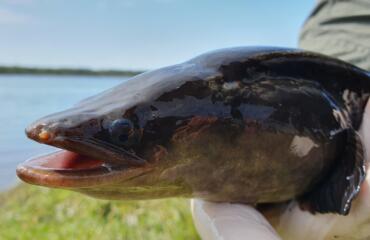
Populations of swift parrots are being threatened by clear-felling in Tasmania. PIC: Dejan Stojanovic
Almost $50,000 has been donated since the campaign to help save three endangered birds — the swift parrot, forty-spotted pardalote and orange-bellied parrot — was launched a week ago by Australian National University researchers.
“To be honest, I was fairly dubious about crowd funding, but the response is fantastic,” said research fellow Dejan Stojanovic. “We hit our initial target in just three days and the donations are still flowing in. It is absolutely awesome to see that so many people care about these endangered birds.”

Previously, the biggest crowd-funding campaign for an endangered Australian animal was for Australasian bitterns or “bunyip birds”, which breed in rice farms in western New South Wales.
The public donated $57,423 to the Tracking Bunyip Birds project, also via the crowd-funding website Pozible.
“The publicity and awareness that crowd-funding generates are as important as the money,” said biologist Matt Herring, who led the bittern project. “The bunyip birds project made many people, including many rice farmers, aware that endangered birds could breed in rice fields.”
Dr Stojanovic believes the success of the nest box project is due to strong support on social media, as well as clearly-defined project goals.
“Many people have told us: ‘I don’t have much money but I am so glad to be able to buy a nest box to help save the birds’,” he said.

That simple pitch – “$25 buys a nest box, which can support a family of endangered birds” – had been critical in drawing public support, Dr Stojanovic added.
According to Pozible, the public has pledged more than $30 million for Australian projects via the website since 2010, including nearly $318,000 for environmental projects.
Despite the buzz around crowd-funding, Australian universities have been slow to harness its potential.
“We are the first group at the Australian National University to launch a crowd-funding campaign, so the university wasn’t able to offer us much advice,” said Dr Stojanovic.
In 2013, Deakin University became the first Australian university to seek research funds through Pozible for a series of biology projects that received $61,572 in donations.
“To be honest, I was fairly dubious about crowd funding, but the response is fantastic . . . It is absolutely awesome that so many people care about these endangered birds.” — Dejan Stojanovic, ANU
The Australian Network for Plant Conservation raised $41,387 last year to save endangered orchids.
“I love the idea of having a social contract with our donors,” said Mr Herring. “With a lot of conventional funding schemes – government grants and so on – there’s not a lot of transparency or accountability with the public and the taxpayer. With crowd-funding, I feel a great sense of obligation to deliver on the generous support.”
Dr Stojanovic agrees: “One of the things I’m most excited about is we’ve received 700 to 800 emails from people who have invested personally in saving these animals, which is very powerful.”
Dr Eric Woehler, the convenor of Birdlife Tasmania, said crowd-funding sent a “strong signal to the people working on these projects that they have the community behind them”. “It shows that community concern can contribute to a conservation strategy and to the management of endangered species.”
Recent research by Dr Stojanovic and colleagues at ANU predicted that swift parrots could be extinct within 20 years because of logging of their breeding grounds, which made the parrots easy prey for predators.
The nest box project aims to slow this decline. The funding bid runs until the end of May.



